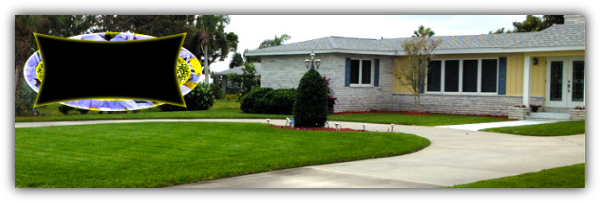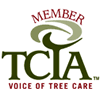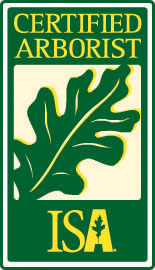


Palm Bay Landscaping Service
Lawn Mowing Service
Top Grade Landscaping Co.
Contact Us
Palm Bay Landscaping Service:
Top Grade Landscaping Co.
875 37th Ave
Vero Beach, FL. 32960
Office: (321) 209-5772
Email: info@palmbaylandscaping.com
Top Grade Landscaping Co.
875 37th Ave
Vero Beach, FL. 32960
Office: (321) 209-5772
Email: info@palmbaylandscaping.com


Free Estimate
Our Service Area
Our professional team works throughout the greater Florida areas including:
Sebastian
32958
32976
32978
Vero Beach
32960
32962
32963
32966
32967
32968
Palm Bay
32905
32906
32907
32908
32909
32910
32911
Micco
32976
Barefoot Bay
32976
Sebastian
32958
32976
32978
Vero Beach
32960
32962
32963
32966
32967
32968
Palm Bay
32905
32906
32907
32908
32909
32910
32911
Micco
32976
Barefoot Bay
32976

List Of Services
Lawn Mowing Service
Land Clearing
Tree Trimming
Landscape Design
Stump Grinding
Lawn Maintenance
Lawn Installation
Fertilization service
Lawn Insect Killer Service
Land Clearing
Tree Trimming
Landscape Design
Stump Grinding
Lawn Maintenance
Lawn Installation
Fertilization service
Lawn Insect Killer Service

Partner Sites
www.topgradeconstructionllc.com
www.verobeachlandscaper.com
www.sebastianlandscaping.com
www.myfloridacfo.com
www.sebastiantreeservice.com
www.verobeachlandscaper.com
www.sebastianlandscaping.com
www.myfloridacfo.com
www.sebastiantreeservice.com
Media Center
Call Us (321) 209-5772
We Accept Credit Cards

Palm Bay FL's #1 Landscape Company!
Landscaping
Lawn Mowing Service - Diversity of Landscape Service .
Lawn Mowing
1.Make sure to mow frequently with sharp blades
If your looking to have a green lawn, the key is frequent cutting, which forces it to grow thick and keep out weeds. Keep mower blades sharp so they cut the grass and not tear it, making it vulnerable to disease.
2. Don Not Cut The Lawn Too Short
The rule of thumb is not to cut more then 1/3rd of the length of grass at a time. If your grass is three inches tall, cut an inch or less. Any deeper and you're "scalping" the plants, which can take two or three mowing cycles to recover. The golf courses mow low for a tightly trimmed look, but grass cut short responds by growing faster. The lower you mow, the more herbicides and water you need, and then it becomes an intensive management system. Mowing high forces grass roots to grow deep. The deeper the roots, the better it will resist disease and the less water it will require.
3. When Mowing Mulch clippings into the lawn
Leave the clippings where they fall. Not only do you eliminate all the bagging and dump trips, but the clippings fertilize the soil. If you're cutting often, the clippings are short and few and work their way back into the soil without becoming brown and messy.
Lawn Irrigation
4. Water Your Lawn Deeply and Infrequently
The number one thing I see homeowners do is overwater, which builds up excess thatch, an unsightly thick mat of tangled roots between the grass blades and soil. Daily watering encourages shallow roots and wastes water. Instead, water deeply, watching closely to see when more is needed.
Here are signs it's time to water your lawn:
The soil resists when you push a screwdriver or steel rod into the ground;
Your grass gets a slightly blue tinge; and
Footprints across the lawn remain compressed.
If you don't have in-ground irrigation, a sprinkler works fine. We suggests giving the lawn an inch of water each time you irrigate. Measure by putting an empty tuna can on the grass. When it's full, move the sprinkler to another spot and start measuring again. Once you know your lawn's needs, you can put the sprinkler on a timer.
Poor soil composed of too much clay or compacted from heavy traffic won't absorb moisture easily. If water pools up and runs onto the street or sidewalk before your tuna can's full, try Plan B: Water just one third of an inch each night for three nights running, then hold off until it needs it again.
Fertilizing The Lawn
5. Try Not To Over Do It!
Over fertilizing stimulates very fast growth, thatch and the need for more mowing and you don't want that. Homeowners use far more fertilizer and pesticides than golf courses do. "Excess fertilizer also is bad for the environment: It washes into streams and lakes, clogging them with algae. Sweep or blow any type of spilled fertilizer into the grass."
To find out your lawn's particular needs, you can test the soil every three or four years. A test will reveals the contents, including salts, organic matter, phosphorus, nitrates and nitrogen, lime and texture. Then take the results to your local garden shop for help deciding which fertilizers and amendments to apply.
Most fertilizer comes in dry grains or pellets. Distribute it evenly using a hand-held fertilizer spreader for small areas, or a wheeled spreader.
.
Pest Control
6. Grow thick grass By stay on top of your weeds
The best defense against pests,weeds, and diseases is to grow a thick, vigorous lawn. If you've only got a few weeds, pull them by hand or use a dandelion weeder, a tool with a forked metal end.
By observing your lawn closely, you may let a problem resolve itself or stay contained without treatment, just as golf-course professionals do. If we have a little bit of disease on a green, we let it go unless we get to the point where we could lose some serious putting quality,.
7. Choose the right herbicide
If you decide you need extra help with weeds, there are two types of herbicides to choose from:
"Pre-emergents" prevent weed seeds from germinating and are often applied once a year.
"Post-emergents" are used after the weed is visible to control broadleaf weeds, such as dandelions and chickweed, or grassy pests such as crab grass, quack grass or even wild varieties of rye or bluegrass that aren't controlled by mowing or hand-pulling.
For More Information Ask The Experts
1.Make sure to mow frequently with sharp blades
If your looking to have a green lawn, the key is frequent cutting, which forces it to grow thick and keep out weeds. Keep mower blades sharp so they cut the grass and not tear it, making it vulnerable to disease.
2. Don Not Cut The Lawn Too Short
The rule of thumb is not to cut more then 1/3rd of the length of grass at a time. If your grass is three inches tall, cut an inch or less. Any deeper and you're "scalping" the plants, which can take two or three mowing cycles to recover. The golf courses mow low for a tightly trimmed look, but grass cut short responds by growing faster. The lower you mow, the more herbicides and water you need, and then it becomes an intensive management system. Mowing high forces grass roots to grow deep. The deeper the roots, the better it will resist disease and the less water it will require.
3. When Mowing Mulch clippings into the lawn
Leave the clippings where they fall. Not only do you eliminate all the bagging and dump trips, but the clippings fertilize the soil. If you're cutting often, the clippings are short and few and work their way back into the soil without becoming brown and messy.
Lawn Irrigation
4. Water Your Lawn Deeply and Infrequently
The number one thing I see homeowners do is overwater, which builds up excess thatch, an unsightly thick mat of tangled roots between the grass blades and soil. Daily watering encourages shallow roots and wastes water. Instead, water deeply, watching closely to see when more is needed.
Here are signs it's time to water your lawn:
The soil resists when you push a screwdriver or steel rod into the ground;
Your grass gets a slightly blue tinge; and
Footprints across the lawn remain compressed.
If you don't have in-ground irrigation, a sprinkler works fine. We suggests giving the lawn an inch of water each time you irrigate. Measure by putting an empty tuna can on the grass. When it's full, move the sprinkler to another spot and start measuring again. Once you know your lawn's needs, you can put the sprinkler on a timer.
Poor soil composed of too much clay or compacted from heavy traffic won't absorb moisture easily. If water pools up and runs onto the street or sidewalk before your tuna can's full, try Plan B: Water just one third of an inch each night for three nights running, then hold off until it needs it again.
Fertilizing The Lawn
5. Try Not To Over Do It!
Over fertilizing stimulates very fast growth, thatch and the need for more mowing and you don't want that. Homeowners use far more fertilizer and pesticides than golf courses do. "Excess fertilizer also is bad for the environment: It washes into streams and lakes, clogging them with algae. Sweep or blow any type of spilled fertilizer into the grass."
To find out your lawn's particular needs, you can test the soil every three or four years. A test will reveals the contents, including salts, organic matter, phosphorus, nitrates and nitrogen, lime and texture. Then take the results to your local garden shop for help deciding which fertilizers and amendments to apply.
Most fertilizer comes in dry grains or pellets. Distribute it evenly using a hand-held fertilizer spreader for small areas, or a wheeled spreader.
.
Pest Control
6. Grow thick grass By stay on top of your weeds
The best defense against pests,weeds, and diseases is to grow a thick, vigorous lawn. If you've only got a few weeds, pull them by hand or use a dandelion weeder, a tool with a forked metal end.
By observing your lawn closely, you may let a problem resolve itself or stay contained without treatment, just as golf-course professionals do. If we have a little bit of disease on a green, we let it go unless we get to the point where we could lose some serious putting quality,.
7. Choose the right herbicide
If you decide you need extra help with weeds, there are two types of herbicides to choose from:
"Pre-emergents" prevent weed seeds from germinating and are often applied once a year.
"Post-emergents" are used after the weed is visible to control broadleaf weeds, such as dandelions and chickweed, or grassy pests such as crab grass, quack grass or even wild varieties of rye or bluegrass that aren't controlled by mowing or hand-pulling.
For More Information Ask The Experts









